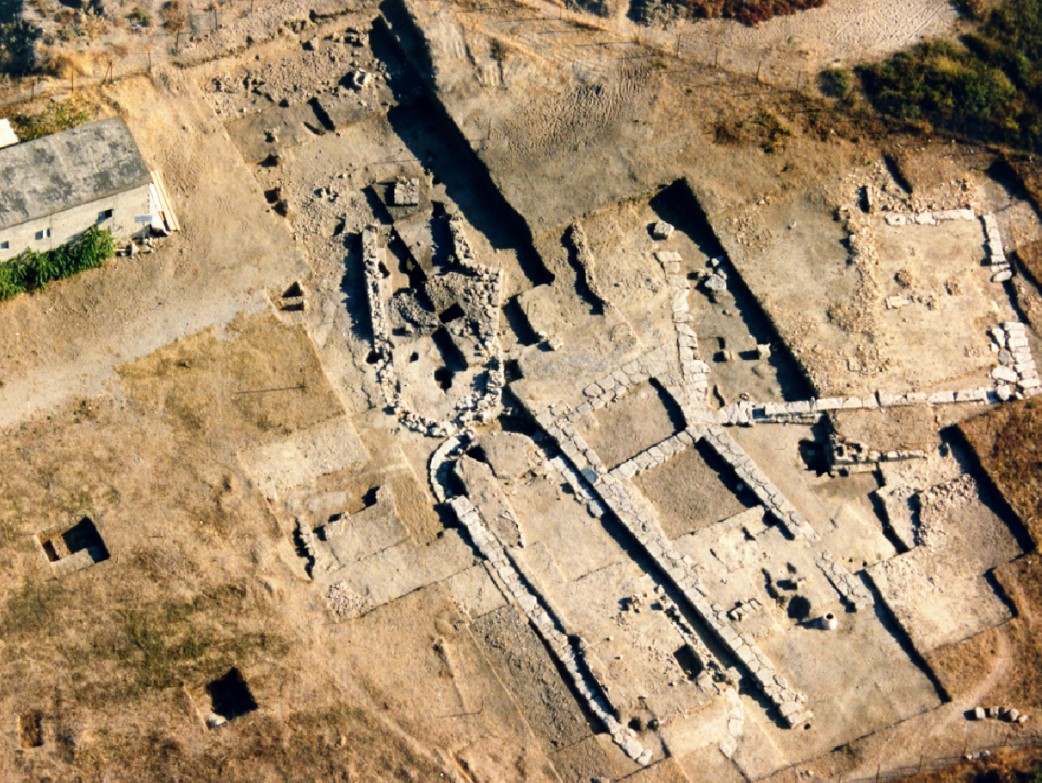
Ancient Mende, one of the most important cities in Chalkidiki, south of present-day Calandra, was founded by Eretrians. Thanks to its extensive trade, its strategic location for maritime routes, timber export but mainly, the production and export of the highly regarded “Mendean wine”, the city experienced great economic prosperity. In addition, it was the homeland of Paeonius, 5th century BC famed sculptor and creator of the statue of Nike at the temple of Zeus in Olympia. Excavations in the city, but mainly research on the seaside cemetery yielded important finds, in particular, the local production of pottery vessels.
According to Thucydides, Mende was a colony of Eretria and one of the most significant cities in Pallene (Kassandra) of Chalkidiki. However, there is no sufficient reference or historical evidence as to the dating of the Eretrian settlement. Perhaps, it initially constituted a place of settlement during the First Colonization (12th-11th century BC) before the establishment of a colony in the 8th century BC.
The city owes its name to minthe, a type of mint, which still grows in the area. It became a member of the Early Delian League and experienced economic prosperity in the 5th century BC, judging by the wide circulation of its coins, the exports of the highly regarded Mendean wine, as well as the establishment of two colonies on the eastern coast of Pallene (Kassandra), Neapolis and Eion. It was one of the production centers of the so-called Chalcidian vessels, characterized by their distinctive shape and special decorative motifs. The famed sculptor Paeonius, native of Mende, created the statue of Nike, which stood in front of the eastern side of the temple of Zeus in Olympia commemorating the victory of the Messenians and the Naupactians over the Spartans after the battle of Sphakteria in 424 BC. Mende defected from the Delian League, thus leading to its siege and plundering by the Athenians. In 348 BC, the city was destroyed by King Philip II, and shortly thereafter, King Cassander transferred the economic center of the region to Kassandria; thus Mende experienced a gradual decline and turned into a seaside village of Kassandra.
The ruins of the ancient city are spread over a flat-topped hill south of Calandra. The earliest evidence of habitation was found at the top of the acropolis (Vigla), where storage pits containing mainly vessels from the 13th to the 7th century BC were brought to light. Excavation yielded successive building phases, mainly streets and houses of the 6th and 5th centuries BC in the seaside part of the city, the so-called “proasteion”, according to Thucydides. Numerous tombs were unearthed in the seaside cemetery of the city, mainly burials of infants and small children, as well as significant finds of local pottery production.
Lastly, other buildings uncovered by the sea were probably related to the commercial and maritime activities of the inhabitants. Remains of pottery workshops from the 5th to the 2nd century BC were discovered in the coastal zone, which are even visible at times to date, when there is a sea level change.
The sanctuary of Poseidon was also discovered in the area of Calandra, at Cape Poseidi, with indications of its use from the end of the 11th-beginning of the 10th century BC. It is the earliest building exclusively used for worship in northern Greece, but also one of the earliest throughout Greece.
Βιβλιογραφία
Σ. Μοσχονησιώτη, Μένδη-Ποσείδι, στο Α. Βλαχόπουλος – Δ. Τσιαφάκη (επιμ.), Αρχαιολογία. Μακεδονία και Θράκη (εκδόσεις Μέλισσα) Αθήνα 2017, 374-377.
Σ. Μοσχονησιώτη, Αρχαία Μένδη, Μελέτες για την αρχαία Μακεδονία. Προς τη γένεση των πόλεων, https://www.greek-language.gr/digitalResources/ancient_greek/macedonia/cities/page_020.html?prev=true (08.06.2023)
Address: Konstantinoupoleos 5,
631 00 Polygyros Halkidiki
Phone: +30 23710 22060
Fax: +30 2310 251892
Mount Athos Technical Office
Address: 7 Hippodrome Square, Thessaloniki
Phone: +30 2310 285163
Fax: +30 2310 251892
E-mail: [email protected]
